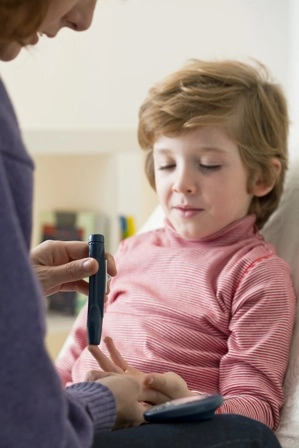Bust These Myths, Code Special Services Correctly
Differences between after-hours and emergency services codes are subtle but important. Codes for encounters outside of regular office hours and for encounters that evolve into emergent situations are tricky to implement. To use the codes correctly, you must fully understand what CPT® means by “regularly scheduled hours” and “emergency basis.” Because these definitions are not always obvious, a number of the 99000-99082 Special Services, Procedures, and Reports codes are subject to some very common myths. So, we’ve tried to dispel the worst to help you code situations that don’t occur every day but occur often enough to deserve a thorough understanding. Myth 1: There’s No Real Difference Between 99050 and 99051 While the two codes look similar, the fact is 99050 (Services provided in the office at times other than regularly scheduled office hours, or days when the office is normally closed (eg, holidays, Saturday or Sunday), in addition to basic service) and 99051 (Service(s) provided in the office during regularly scheduled evening, weekend, or holiday office hours, in addition to basic service) describe two very different scenarios. Let’s suppose your office’s regularly posted hours are 8:00 AM-6:00 PM Monday through Friday, and 8:00 AM-12:00 PM on Saturdays. Use 99050 when your pediatrician sees a patient outside of those regularly scheduled hours. For example, on Thursday evening, a parent comes in with a child at 6:15 PM, and your pediatrician decides to stay late and see the child. In this case, you would use 99050 along with the appropriate evaluation and management (E/M) service code from 99202-99215 (Office or other outpatient visit for the evaluation and management of a new/established patient …). Use 99051 when your pediatrician sees a patient during evening, weekend, or holiday hours that the practice has posted. For example, your pediatrician sees a patient at 9:00 AM on Saturday. In this case, you’d use 99051 along with the appropriate E/M service code. You’ll also use 99051 for services provided during hours scheduled for holidays. For example, your office manager decides to open the practice on Thanksgiving Day from 8:00 AM to 3:00 PM, and publicizes these hours on your practice website, social media, and signage around the building. You would use 99051 for any patients seen on that day, as posted holiday hours are regarded as a regular part of your schedule, even if that schedule is only temporary. Remember this 1: “99050 does not apply when providers see patients who arrive during posted hours but are not seen until after them. So, if your office gets backed up, and your provider doesn’t see a patient scheduled for 5:45 PM until 6:30 PM, and your office normally stops seeing patients at 6:00 PM, you cannot use the code,” says Mary I. Falbo, MBA, CPC, CEO of Millennium Healthcare Consulting Inc. in Lansdale, Pennsylvania. Remember this 2: CPT® does not define what constitutes evening hours. But you can generally regard them as “any time after 6:00 PM and before 8:00 AM,” says Falbo. Remember this 3: Patients do not have to be scheduled in order for you to use either code. They just have to be seen during or around regularly scheduled hours. Myth 2: You Can Use 99050 and 99051 on Their Own, Using Modifier 51 for Multiple Same-Day Encounters Neither of these myths are remotely true. CPT® guidelines for the 99000-99082 series are very clear that “codes 99050-99060 are reported in addition to an associated basic service.” In other words, you must report the codes with the other service(s) performed at the time. The guidelines also direct that modifier 51 (Multiple procedures) should not be appended to codes 99050-99060, even if you report multiple adjunct codes per patient encounter, although it would be unusual for you to report multiple codes from this family for a single patient encounter. Myth 3: You Can Use 99058 and 99060 Whenever an Emergency Disrupts Your Practice’s Schedule While there is a grain of truth to this myth, the fact is CPT® is vague over what constitutes an emergency and how much of a disruption it causes to your pediatrician’s schedule before you report 99058 (Service(s) provided on an emergency basis in the office, which disrupts other scheduled office services, in addition to basic service) or 99060 (Service(s) provided on an emergency basis, out of the office, which disrupts other scheduled office services, in addition to basic service). To apply 99058, you will need to make the determination that “the patient’s condition is such that they have to be seen immediately while other scheduled patients have to wait until the emergent situation is resolved,” says Jan Rasmussen, PCS, CPC, ACS-GI, ACS-OB, owner/consultant of Professional Coding Solutions in Holcombe, Wisconsin. For example, suppose a patient suffers an asthma attack in the waiting room while waiting for your pediatrician to see them. Your pediatrician interrupts other scheduled appointments and immediately attends to the patient, administers a bronchodilator, and stabilizes the patient. Such a situation probably does not rise to the level of a critical care service (99291-+99292), and you cannot use an emergency department code (99281-99285) because you cannot bill them in a physician’s office setting. But you can justify coding 99058 providing you document the emergent situation. As with all the 99050-99060 codes, you must also report the 99058 with the associated basic service — in this case, presumably, a 99202-99215 E/M service. The bottom line on 99058/99060: Payers such as Medicare consider these bundled services, as do some private payers. But some will pay for them, “likely because they figure it is less expensive for an emergency to be seen in an office setting rather than in a facility emergency room, where there will be a facility fee in addition to the physician charge,” says Rasmussen. But even if your payers do NOT pay for these services, they are reportable. Refraining from billing reportable services can have the effect of falsely lowering utilization of such codes, making them appear to regulators as if they are not applicable. And the AMA may eventually modify or delete codes from the code set altogether if they go unused in this way.





